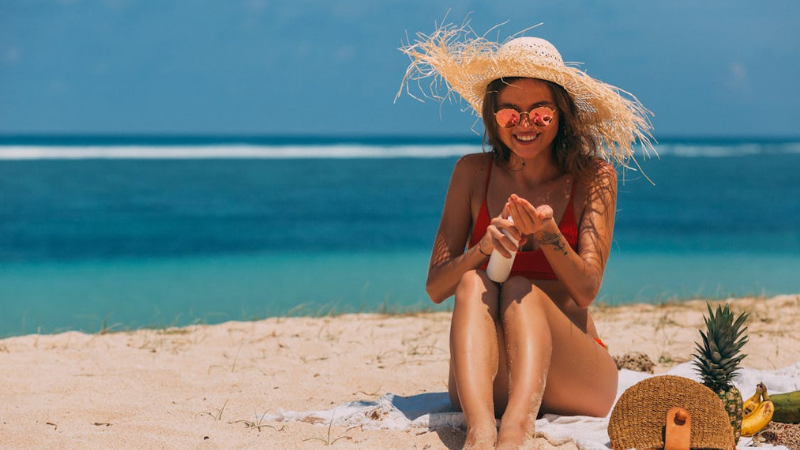Skin cancer is the most common type of cancer. Overexposure to ultraviolet (UV) rays from the sun is the leading cause. While some sun exposure is healthy, too much can damage your skin and increase your risk of skin cancer. Here are tips to help reduce your risk of skin cancer from sun exposure.
Limit Time in the Midday Sun
The sun’s UV rays are strongest between 10am and 4pm. To reduce exposure:
- Plan outdoor activities for other times of the day, when possible. Try scheduling activities like gardening in the morning or evening.
- Take breaks and seek shade when outdoors midday.
- Reschedule or relocate midday events. Have picnics and barbecues earlier or later when UV rays are less intense.
Use Sunscreen No Matter the Time of Year
Apply sunscreen with SPF 30 or higher to exposed skin whenever you go outside, even on cloudy days. Choose a broad spectrum sunscreen that protects against UVA and UVB rays. Apply it all over at least 15 minutes before sun exposure. Apply it again every 2 hours and after swimming or sweating.
Cover Up with UV Protective Clothing
Covering your skin is one of the best defences against UV rays. Wear tightly woven, loose-fitting clothing that covers as much skin as possible. Fabrics like lightweight cotton provide protection while remaining breathable in hot weather.
Hats with a wide brim offer shade to vulnerable areas like the face, ears, and neck. Sunglasses protect the delicate skin around the eyes. Look for sunglasses that block 99-100% of UV rays.
Certain fabrics are specially designed to block UV rays, providing extra protection. These include UV ray blocking clothing, swimwear, and accessories. Look for SPF protection clothes with an ultraviolet protection factor (UPF) rating of 30 or higher. The higher the UPF, the more UV rays are blocked. You can find quality UV ray blocking clothing at LifeJacket.
Seek Shade
Resting in the shade is an easy way to limit your sun exposure. Options include:
- Trees – Trees provide cool, shady spots to take a break.
- Umbrellas – Use portable umbrellas at the pool, beach, or park for instant shade.
- Tents and canopies – Temporary outdoor structures allow you to enjoy shade anywhere.
- Buildings – Duck into buildings to avoid direct sun. Many public spaces like museums are ideal spots to cool down.
- Sun shelters – Look for purpose-built sun shelters at parks, beaches, and recreational areas.
Avoid Tanning Beds and Sunlamps
Tanning beds and sunlamps emit intense UV radiation, and frequently using them can significantly raise skin cancer risk. The safest option is to avoid indoor tanning altogether. Talk to your doctor if you have questions or concerns.
Check the UV Index
The UV index provides important information about daily radiation levels in your area. Higher numbers indicate stronger UV rays and a greater risk of sun damage. Check the UV index online or in weather forecasts to plan outdoor time accordingly.
See Your Doctor
Get an annual skin exam from your doctor to spot any new or changing moles or spots that could be skin cancer. Early detection gives the best chance of successful treatment. Discuss other sun protection strategies with your doctor as well.
Be Sun Smart Every Day
Making sun safety part of your daily routine is key to reducing lifetime sun exposure. Small steps like wearing sunscreen, adding a hat, and seeking shade go a long way in protecting your skin from UV damage. Protecting yourself from the sun helps minimise your risk of developing skin cancer.




